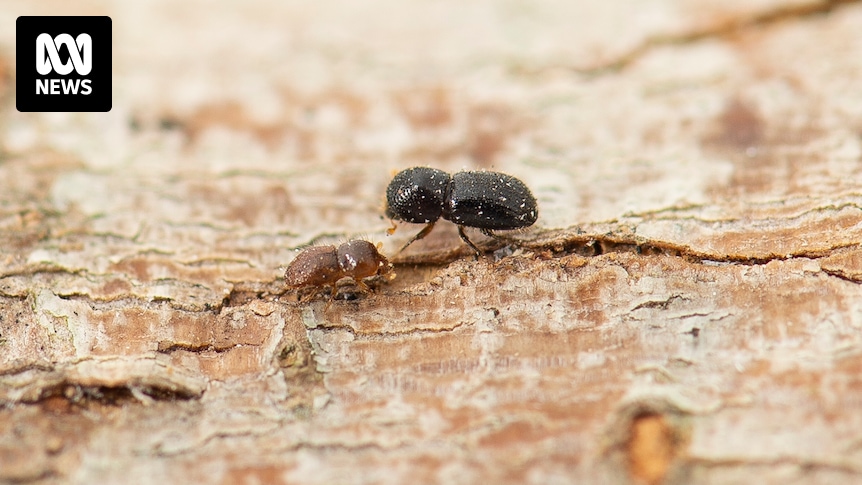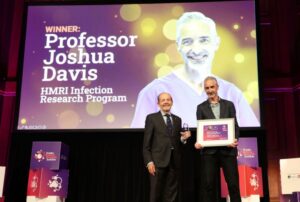
Perth’s tree canopy is under siege from multiple fronts, including urban development, mining activities, and diminishing groundwater levels. Adding to this list of challenges is the invasive polyphagous shot-hole borer, a beetle that has been wreaking havoc on the city’s trees since 2021. This pest, notorious for spreading a deadly fungus, primarily targets exotic trees, but native species such as melaleucas are also vulnerable.
In an effort to curb the beetle’s spread, the Western Australian government has already removed 4,794 trees, including some from iconic green spaces like Kings Park, Hyde Park, and Stirling Gardens. The situation reached a point where an island at Hyde Park’s lake was stripped bare due to the infestation. Last month, a national biosecurity taskforce transitioned from an eradication strategy to a long-term management plan, raising concerns among those in Western Australia’s agricultural sector.
Scientific Community Seeks a Cure
In response to the escalating threat, teams of researchers are developing innovative methods to identify, contain, and eradicate the beetle. Funded by the Western Australian government through the WA Agriculture Research Centre (WAARC), three major projects have been allocated $2.17 million for three years of research. This week, key stakeholders convened at a symposium to discuss the progress of these initiatives.
Theo Evans, an associate professor of applied entomology at the University of Western Australia, presented promising early results from two trials that began in September 2024. Evans is experimenting with a chemical injection for infected trees and employing commercially available nematodes to consume the beetle.
Some Trees Stronger Than Others
Treena Burgess, a forest pathologist and director of the Harry Butler Institute, is leading several studies at Murdoch University, focusing on the fungus produced by the beetle. “A key piece of our research is going to be trying to understand how susceptible different tree species are to the fungus,” Professor Burgess explained.
She noted that while the beetle acts as a vector, the fungus is the true killer, with varying levels of susceptibility among tree species. “Some trees can fight the fungus,” she added. Due to the urgent need for information, universities and stakeholders are sharing data in real-time, bypassing the lengthy peer-review process. “The purpose of this is to solve the problem,” Burgess emphasized.
Remote Vegetation Mapping
Paul Barber, managing director of environmental consultancy ArborCarbon and adjunct professor at Murdoch University, is utilizing funding to deploy an “ArborCam” to map Perth’s tree coverage. ArborCarbon has previously led biosecurity responses in Australia’s eastern states.
“The ArborCam is special because it can collect 11 bands of data across the spectrum, measuring factors like vegetation condition, height, and surface temperatures,” Professor Barber stated. “It will allow us to benchmark the health of the trees and can even differentiate between species, which is crucial for managing the polyphagous shot-hole borer.”
This technology will help identify the most susceptible trees, directing on-the-ground efforts more effectively. Barber aims to make ArborCam data available online for stakeholders and researchers.
Modelling Future Spread
Ben Phillips, a professor of population biology at Curtin University, is developing models to predict the shot-hole borer’s spread and assess the effectiveness of current detection methods. “The polyphagous shot-hole borer arrived in Perth through sheer dumb bad luck, but what we’ve found is that Perth is not the best place in Australia for it in terms of temperature,” Professor Phillips explained.
Most of the eastern seaboard of Queensland is looking like a spot for the borer, particularly the area around Cairns.
Despite Perth’s less-than-ideal climate, the beetle exhibits a remarkably high growth rate. The female borer can reproduce without a male, and Phillips’ modelling indicates that the population could surge from one to a million in just a year under Perth conditions.
All researchers involved are optimistic that their efforts will lead to improved management tools for this destructive pest. The collaboration among scientists, government, and industry stakeholders represents a concerted effort to protect Perth’s valuable tree canopy from further devastation.





